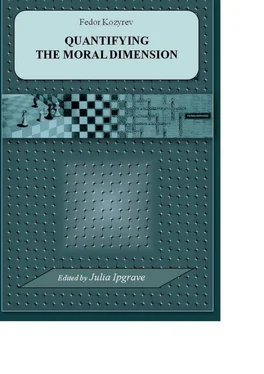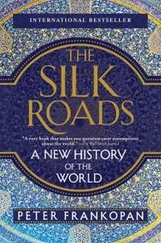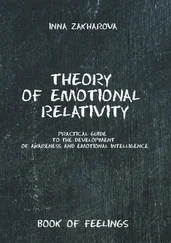Rudimentary to this movement was W. Dilthey’s project of descriptive or structural psychology . The opposition of explanative and descriptive psychology correlates with the distinction he proposesbetween natural sciences ( Naturwissenschaften ) and human sciences ( Geisteswissenschaften ). Freudianism and constructivism occur in this scheme on different sides, as long as the former hastens to give explanations for tacit dimensions of psychological life while the latter seeks to uncover these dimensions for observation and reflection. J.-P. Ricoeur called psychoanalysis an archaeology of the soul meaning not only its concern with the past as the cause of the present condition of the patient but also its habit to reproduce the whole from its fragments. Anamnesis comes in this case as a result of the particular combination of pieces fished out of the stream of information by means of an instrument tuned in advance to catch highly specific psychological structures. Other things are filtered out. Constructivism, on the contrary, motivates the researcher to collect and to include in analysis as many descriptions as possible in the mode of C. Gyrtz’s doctrine or that of literary criticism and to elaborate (or adjust) criteria for diagnostics afterwards on the basis of the collected data. The reproduction of a hidden pattern is achieved in this mode not through the application of a universal scheme to the particular case and the excogitation of missing pieces but through resorting and reshuffling numerous data until reaching the maximal likelihood.
So the aspiration to minimize the damage of reduction (that is the deliberate impoverishment and simplification of the rich whole, associating it with an abstract model, projecting onto it a chosen plan, neglecting details etc.) determines the main difference between constructivism and former empiric-analytical methods of studying hidden psychological processes. This feature brings constructivism close to the humanities. At the same time a characteristic for the former is the wider application of analytical procedures, quantitative methods and statistics than is usual for the latter. It even has sights on not just the disclosure but also the quantification or measurement of the dark side of psychic reality.
In this respect constructivism implies the principle of complementarity (N. Bohr). On the one hand the aspiration to observe intact the structure of its object means abstaining from its complete disassembly and employing instead the technique of drawing or sketching a portrait. At this holistic level of description constructivism operates as a rule with integral moulds or patterns of individual and collective psychic complexes. On the other hand, a construct is by definition something consisting of elements. Accordingly, it is hardly possible for constructivism to reject the use of analytical procedures, of modelling and programming constructs. As a result of the implementation of this atomistic approach the mould of psychic complexes emerges as a «digital’ image produced according to certain formulated rules from identifiable elements. This mosaic-style reconstruction of the psyche as a method corresponds perfectly to the mosaic nature of its referent – to the nature of a construct.
As a platform for the synthesis of humanities and empiric-analytical approaches constructivism incorporates a wide range of ideas and methods from structuralism (in a generally-scientific, not in a specifically psychological meaning) and hermeneutics. Structuralism is a pole of attraction for the harder branch of constructivism aiming at the maximal formalisation of description and preferring the abstraction, mathematical language and methods of exact sciences. Representatives of this branch are inclined to consider constructs as schemes , apt for mathematical representation. Not coincidentally Piaget used the term of cognitive schema for the basic concept of his structural theory of development. Constructivism of this sort has a strong nomothetic tendency toward the discovery of universal laws. The border between structuralism and constructivism at this pole is blurred yet the probable criterion for distinguishing between them may be the more dynamic vision of constructs assumed by constructivism.
The softer branch of constructivism tends toward the pole of the humanities. It borrows from the humanities-style idiographic set of ideas its focus on the concrete and unique, the idea of the hermeneutic circle, its contextual approach to the interpretation of data, its concern about the problem of the compliance of the researcher’s and respondent’s «horizons of interpretation’ and their belonging to one and the same «language game’. The construct in this version is regarded as a personal narrative rather than a scheme, and group patterns play the roles of «meta-narratives’ (Lyotard), shared within (sub) cultures and responsible for the formation of «narrative identities’ (Ricoeur). As the language of mathematics is not suitable here it is substituted with the language of narration, hence models are replaced by plots and the roles of formula are often played by metaphors. Yet general constructivist commitment to analysis stays alive and takes in the idiographic frame of reference, a form of preference for ipsative scales. The diversity and the uniqueness of personal narratives obstruct significantly the perspective of finding general regularities and orient the researcher toward the ideal of better understanding as promoted by the Dilthey’s project of structural psychology. At the same time a matured hermeneutical tradition with its notion of prejudices directs the researcher toward recognition of socio-cultural conditionality of psychic phenomena and makes constructivism more successful than structuralism in this respect.
For constructivism its position on the border between humanities and positive sciences is a stimulus for innovative activity in its methodology. Here it can build on the ideas of cybernetics and synergetics, of information theory and the theory of systems, of semantics and semiotics, of theoretical and applied linguistics, of non-parametrical statistics and of other new fields of study generated in the space of interdisciplinary integration. Of special interest here are the methods that allow the detection, identification and quantification of hidden factors and parameters as soon as they are the primary focus of constructivism itself. Activity and integrity are the first among the parameters that are a-priori ascribed to constructs. One of the first attempts in the pre-paradigm history of constructivism to try the constructivist idea of measuring psychic properties belongs to J.-F. Herbart. He has chosen the intensity of perceptions as the parameter for detection. He relied on activity, the first of the two basic characteristics of constructs Modern constructivism does not abandon this perspective. The rigidity/permeability of constructs (Kelly) that can be measured in the series of subsequent tests is but one example of such a dynamic characteristic. However, the mainstream of constructivism today has taken another direction connected to the measurement of another parameter – that of integrity. This turn was dictated by the revolution in computer facilities that provided an ordinary researcher with unprecedented and almost unbelievable opportunities for the statistical processing of data. These enabled the realisation of the above-mentioned strategy of data reshuffling and the reconstruction of the psyche in the form of «digital moulds’. Figuratively speaking, if a researcher of former times was given a million pieces to make one big image he would probably doubt whether his life would be long enough for completing this puzzle. Today the researcher has an opportunity to hand over this task to a machine that will resolve the task in a couple of minutes. Some of these new technologies, such as factor analysis, were imported by constructivism from other scientific schools. Some came out of its own workshops. Tests on moral capacities (the main topic of this book) belong mostly to the second category.
Читать дальше












